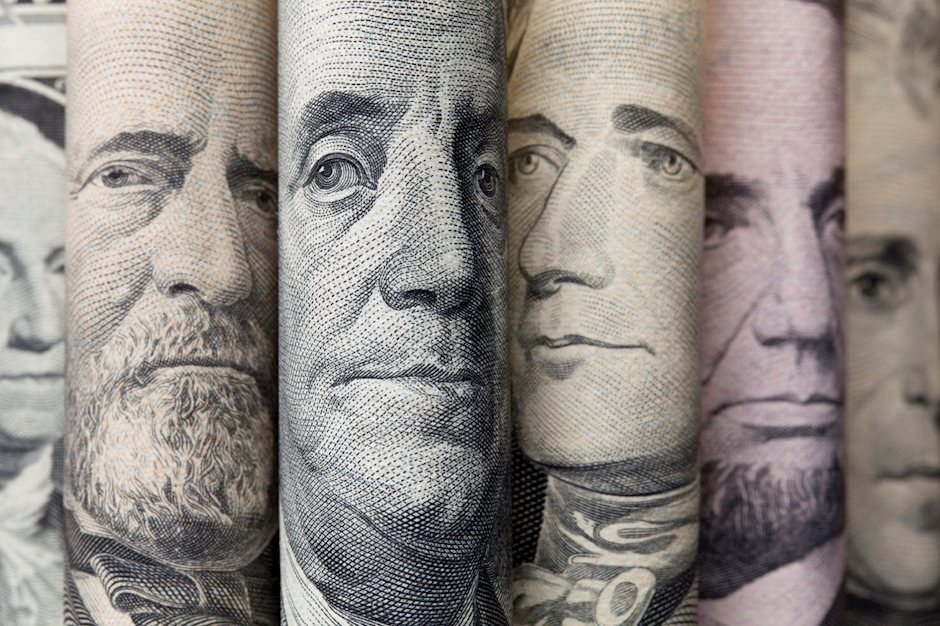US Dollar stood neutral on a quiet Monday, focus shifts to CPI
- The DXY stands at 104.10 on Monday with mild gains.
- Fed’s dovish stance remains in place despite minimal chance of a March rate cut.
- January’s CPI figures on Tuesday are set to determine the timing of Fed cuts and USD dynamics.

The US Dollar (USD) remains firmly positioned at 104.10, demonstrating stability ahead of key US data releases expected this week. Financial markets keenly await economic reports on the Consumer Price Index (CPI), Producer Price Index (PPI), and Retail Sales data from January, which could potentially bolster the Dollar's position further. Simultaneously, anticipation builds around upcoming inflation reports, expected to shed light on the economy's performance and the Federal Reserve's (Fed) future stance
In early February, the US Dollar saw notable gains following comments from Jerome Powell, the Federal Reserve Chair, indicating that a March cut in interest rates was unlikely. He stressed the need for more evidence of falling inflation before the Fed could consider reducing rates, making upcoming data crucial. Tuesday’s release of the US Consumer Price Index (CPI) for January is expected to significantly influence the short-term direction of the US Dollar.
Daily digest market movers: US Dollar holds steady as markets await key economic data, yields hold steady
- The Core CPI in January is expected to have risen by 3.7% YoY, while the headline measure is seen decelerating to 2.9% YoY.
- US Treasury yields are mildly down. The 2-year yield stands at 4.47%, the 5-year yield at 4.12%, and the 10-year yield at 4.17%.
- CME’s FedWatch Tool indicates a 20% possibility of a rate cut for the March meeting but may see some changes in case the US CPI from January comes in lower than expected. Those odds stand at around 50% for May.
Technical analysis: DXY bulls hold their ground, unable to conquer the 100-day SMA
The Relative Strength Index (RSI) remains stable within positive territory, indicating that upward force retains some punch in the dynamic of the index despite recent shifts. The Moving Average Convergence Divergence (MACD) also offers green flat bars, suggesting a positive trend in line with the bullish stance.
On the scope of the Simple Moving Averages (SMAs), the DXY appears to hover above the 20-day SMA and similarly above the 200-day SMA, indicating a strong bullish perspective in the longer horizon. However, it's trading just beneath the 100-day SMA, suggesting some sell-off pressure in the near to intermediate term.
Given these indicators, it's evident that buying momentum is more present than selling pressure. While the bearish movements have caused some disruption, the resilient undercurrent of bullish energy reflected in the RSI, MACD, and SMAs denotes an optimistic outlook in the overall trend.
Fed FAQs
What does the Federal Reserve do, how does it impact the US Dollar?
Monetary policy in the US is shaped by the Federal Reserve (Fed). The Fed has two mandates: to achieve price stability and foster full employment. Its primary tool to achieve these goals is by adjusting interest rates.
When prices are rising too quickly and inflation is above the Fed’s 2% target, it raises interest rates, increasing borrowing costs throughout the economy. This results in a stronger US Dollar (USD) as it makes the US a more attractive place for international investors to park their money.
When inflation falls below 2% or the Unemployment Rate is too high, the Fed may lower interest rates to encourage borrowing, which weighs on the Greenback.
How often does the Fed hold monetary policy meetings?
The Federal Reserve (Fed) holds eight policy meetings a year, where the Federal Open Market Committee (FOMC) assesses economic conditions and makes monetary policy decisions.
The FOMC is attended by twelve Fed officials – the seven members of the Board of Governors, the president of the Federal Reserve Bank of New York, and four of the remaining eleven regional Reserve Bank presidents, who serve one-year terms on a rotating basis.
What is Quantitative Easing (QE) and how does it impact USD?
In extreme situations, the Federal Reserve may resort to a policy named Quantitative Easing (QE). QE is the process by which the Fed substantially increases the flow of credit in a stuck financial system.
It is a non-standard policy measure used during crises or when inflation is extremely low. It was the Fed’s weapon of choice during the Great Financial Crisis in 2008. It involves the Fed printing more Dollars and using them to buy high grade bonds from financial institutions. QE usually weakens the US Dollar.
What is Quantitative Tightening (QT) and how does it impact the US Dollar?
Quantitative tightening (QT) is the reverse process of QE, whereby the Federal Reserve stops buying bonds from financial institutions and does not reinvest the principal from the bonds it holds maturing, to purchase new bonds. It is usually positive for the value of the US Dollar.
Author

Patricio Martín
FXStreet
Patricio is an economist from Argentina passionate about global finance and understanding the daily movements of the markets.

















